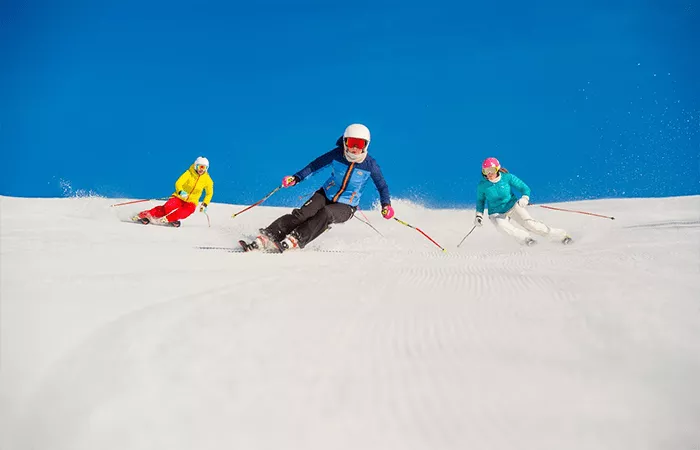Parallel skiing is a fundamental skill that every intermediate skier aims to master. Unlike the wedge or snowplow technique, parallel skiing requires both skis to run side by side, allowing for smoother turns and better control. The time it takes to learn this skill varies depending on several factors, including prior experience, physical fitness, and practice frequency.Before attempting parallel turns, skiers should already be comfortable with basic maneuvers such as stopping, turning, and controlling speed. A solid foundation in these areas ensures a smoother transition to more advanced techniques. Without this groundwork, progress may be slower, and frustration can set in.
The role of physical health in learning speed
Skiing demands strength, balance, and endurance. Those who engage in regular physical activity, particularly exercises that target the legs and core, will find it easier to adapt to parallel skiing. Strong muscles help maintain proper form, while good balance prevents unnecessary falls.
Flexibility is another key component. Tight muscles can restrict movement, making it harder to execute smooth turns. Stretching routines, especially for the hamstrings and hips, can significantly improve performance on the slopes. Skiers who neglect fitness may take longer to progress, as fatigue and poor form can hinder learning.
The frequency of practice
Consistency is essential when learning any new skill, and parallel skiing is no exception. Skiers who hit the slopes regularly—ideally several times a week—will progress much faster than those who only ski occasionally. Muscle memory develops through repetition, and frequent practice reinforces proper technique.
Even short sessions can be beneficial if they are focused. Working on specific drills, such as edge control or weight shifting, helps break down the skill into manageable parts. Skiers who practice sporadically may struggle to retain what they’ve learned, leading to slower overall progress.
High-quality guidance
While some skiers may attempt to teach themselves parallel skiing, professional instruction often leads to faster and more efficient learning. A certified ski instructor can identify mistakes early and provide targeted feedback. Small adjustments in posture or weight distribution can make a significant difference.
Group lessons can also be valuable, as they allow skiers to observe others and learn from their mistakes. However, private lessons offer personalized attention, which may be more effective for those who struggle with specific aspects of the technique. Investing in quality instruction can reduce the time it takes to master parallel skiing.
Terrain Selection Impacts Your Progression Rate
Not all slopes are created equal when it comes to learning parallel skiing. Beginners should start on gentle, well-groomed runs where they can focus on technique without the added challenge of steep or icy terrain. As confidence grows, gradually increasing the difficulty of the slopes will help reinforce skills.
Attempting advanced terrain too soon can lead to bad habits, such as relying on the wedge instead of committing to parallel turns. Skiers who progress at a steady pace, challenging themselves without overreaching, will see more consistent improvement.
Mental preparation and physical preparation
Skiing is as much a mental game as it is a physical one. Fear of speed or falling can create tension, which disrupts balance and fluidity. Visualization techniques, where skiers mentally rehearse turns before executing them, can build confidence and improve performance.
Patience is also critical. Learning parallel skiing takes time, and setbacks are normal. Skiers who approach the process with a positive mindset and realistic expectations are more likely to stay motivated and see steady progress.
Conclusion
The journey to mastering parallel skiing is as rewarding as the skill itself. While the time it takes varies from skier to skier, the key lies in consistent effort, proper technique, and a mindset geared toward gradual improvement. Rather than fixating on a rigid timeline, focus on incremental progress—each session on the slopes brings you closer to fluid, confident parallel turns.
Skiing is a sport that rewards patience and persistence. Some may achieve proficiency in a matter of weeks, while others might need a full season or more. What truly matters is not how quickly you learn, but how well you absorb and apply the fundamentals. Celebrate small victories, whether it’s nailing a clean turn, improving edge control, or simply feeling more stable at higher speeds.
Remember, even the most advanced skiers were once beginners. Every fall, every correction, and every breakthrough contributes to your growth. By maintaining a structured practice routine, seeking expert guidance when needed, and staying mentally resilient, you’ll not only learn parallel skiing—you’ll own it.
So, instead of asking, “How long will it take?” ask, “How can I make each run count?” The answer to that question will determine your success far more than any arbitrary timeline. Strap on your skis, trust the process, and enjoy the ride—the slopes are waiting.
Related topics

